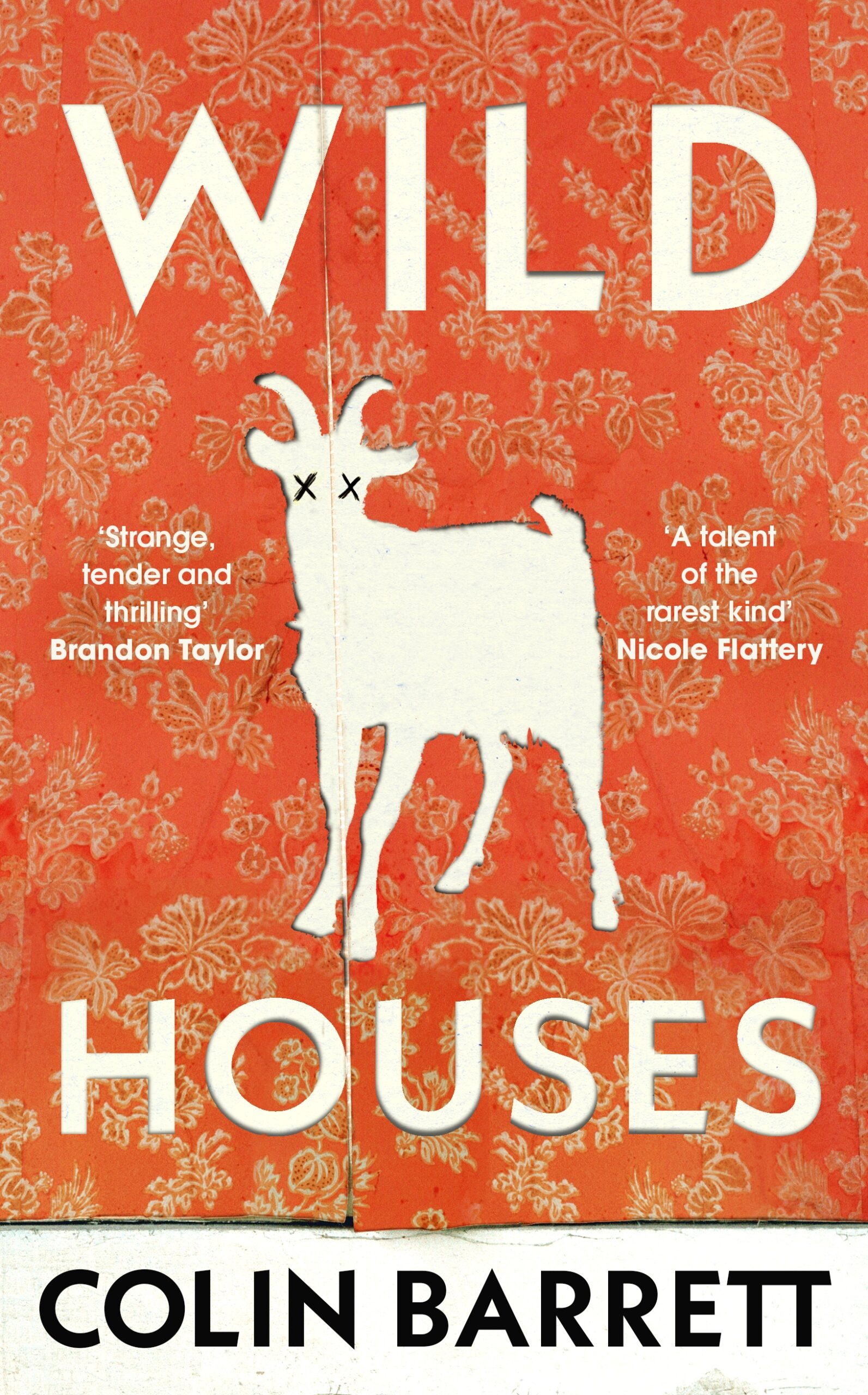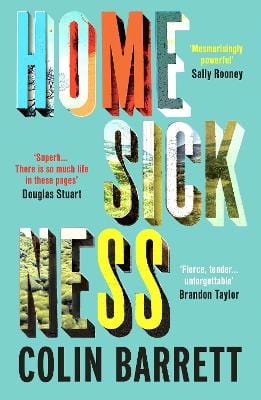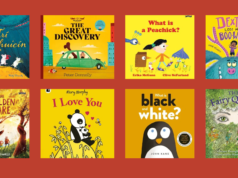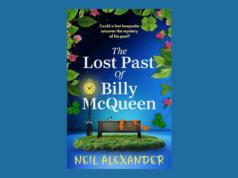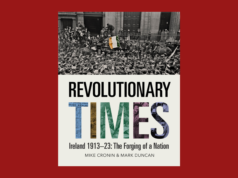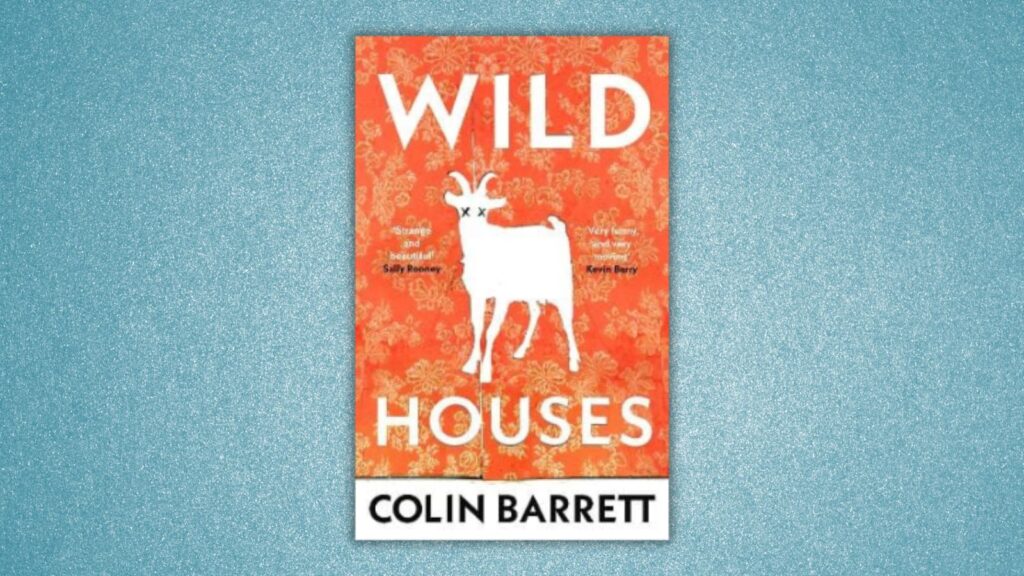
Wild Houses|Colin Barrett|Jonathan Cape
The Wild North-West—David Butler reviews Wild Houses, by Colin Barrett
by David Butler
In any map of the contemporary Irish imagination, a wild north-west runs from the Louisburg of Mike McCormack across the Shannon to Conor McPherson’s Weir by way of the Ox Mountains of Kevin Barry. The protagonists of Louise Kennedy’s The End of the World is a Cul de Sac dwell there, and the hinterland of Colin Barrett’s Glanbeigh / Ballina lies squarely within its bounds. In this imaginary topography, Donal Ryan’s Tipperary is contiguous in a way that John McGahern’s Roscommon, or Claire Keegan’s Wicklow/Wexford, are not.
The inhabitants of all the above may be irreparably damaged by dysfunctional families, but here they’re au fait with video streaming and synthetic drugs, with X-boxes and smart-phones and Ziploc bags of weed; they’re as likely to binge on takeaways and box-sets as whiskey. The wild north-west’s decidedly post-Tiger economy is peopled by dodgy developers and corrupt politicians, by drug-pushers, small-time crooks, outsiders, misfits—outlaws in the original derivation of the word.
There is something of the cowboy in their conception of themselves. To the end of Wild Houses, the Ferdia brothers, who’d kidnapped ‘the kid’, talk about leaving Dodge, while in a dream in which her late father is competitively rowing, Nicky Hennigan urges him to “beat them to the draw”—fortuitously, the real-life Ballina paper occasionally referenced is titled Western People.
Within its expanse, towns act as loci of edgy interaction, though in place of saloon, bank or jail, the sites of confrontation are now the dancehall, the lounge, the late night chipper
That said, any western paradigm is contemporary and vestigial, as depicted, say, in the trailer-parks of Tracy Letts, Annie Proulx or Daniel Woodrell. Like the iconic prairie, the sparsely populated Mayo landscape is both a correlative to character and a contributing factor to its formation. Within its expanse, towns act as loci of edgy interaction, though in place of saloon, bank or jail, the sites of confrontation are now the dancehall, the lounge, the late night chipper. A sense of menace, of violence waiting to erupt, pervades these spaces. A stranger seated in the Pearl Hotel Bar, where the teenaged Nicky Hennigan works, was “broodingly scanning the crowd. Nicky knew what this man was waiting for, even if he didn’t know it himself. He was waiting for the night’s insult to present itself, and if it didn’t, he might decide to invent it.”
There is a bravado in the way these characters interact that recalls Norman Mailer’s assertion (quoted via Kevin Barry): “When two men say ‘hello’ on the street, one of them loses.” Even in a mother-son dialogue with apparently little at stake, there is a brio to the speech that at times borders on the Baroque:
‘I know you’re going to meet that brother of yours and don’t say otherwise,’ Sheila said.
‘Why would I say otherwise?’ Doll said.
‘Electing to leave that detail out.’
‘I didn’t leave it out. I didn’t think it was worth mentioning,’ Doll said. ‘But yeah, I might well drop in to Cillian’s. Why wouldn’t I?’
‘There’s no law forbids it.’
‘You could always forbid me.’
‘I could, only you’d be twice as enticed to be spending time with that man in his milieu if I did.’
‘His milieu!’ Doll scoffed.
‘I know the sorts that do be congregating over there. That house is a wild house.’
Sheila English is far from the only exponent of this manner of speaking. Here is the thuggish Gabe Ferdia, in answer to a query from Dev on dying: “‘The circles I run in, I meet more than my fair share of men who, let’s just say, find themselves occupying an advanced state of parlousness.’”
For Barrett, dialogue, at which he excels, is always performative, as revealing of interiority as are gesture and action. In conversation with Colm Tóibín as part of the latter’s excellent Art of Reading Book Club series, he talks of “the accretion of credible details” as a preferred method of developing and presenting character.
No-one can accuse Colin Barrett of being prolix. Since his story “Let’s Go Kill Ourselves” appeared in The Stinging Fly in 2009, his published output computes to approximately one short-story per year. Of the fifteen stories to date, all but two are located in Mayo, Ballina having replaced the fictional Glanbeigh of his multi-award winning debut collection, Young Skins (Stinging Fly Press, 2013).
Barrett’s instinct is to omit, to excise, to distil. He is far more interested in how characters manifest themselves, in quirk and dialogue, than in providing potted histories of what may have led them to behave in that way
His long awaited inaugural novel, Wild Houses is very much cut from the same cloth. This is unsurprising, since as Barrett attests, his modus operandi is to have three or four projects on the go simultaneously, the novel having moved through a number of redrafts and iterations over the same years as the final stories of Homesickness (Jonathan Cape, 2022). Where it is different is, by necessity, in the density of the prose. Barrett’s instinct is to omit, to excise, to distil. He is far more interested in how characters manifest themselves, in quirk and dialogue, than in providing potted histories of what may have led them to behave in that way.
In this he’s a subscriber to the ‘iceberg’ approach advocated by Hemingway, whereby only one-ninth of the fiction’s imaginative elaboration finally lies above water, visible to the reader. To extend the metaphor, for the more diffuse form of the novel in which more of the backstory is above the waterline, the prose will have a lower specific density.
That said, the plot of Wild Houses has all the economy of a short story. Set over a long weekend, its cast is largely limited to two groupings: the English brothers Cillian and Donal (or Doll, sometimes referred to as ‘the kid’), together with the kid’s girlfriend (or ‘beoir’), Nicky, an orphan; and the Ferdia brothers, Gabe and Sketch, who, in order to recover a drug debt, kidnap the kid, and conceal him in the house of their cousin, Dev (Deveraux) Hendrick. There are also lively individual scenes involving Sheila English, Martin Hendrick, and Nicky’s somewhat sleazy boss, but that pretty much constitutes the cast of characters.
Earlier drafts included a wider range of points of view, but these were cut down in successive drafts to focus on Dev’s and Nicky’s perspectives. Interestingly, the first draft, which was more rigidly chronological, took more than a hundred pages to reach the kidnap, which is to all extents and purposes the story’s inciting incident. By transplanting this chapter to open the novel, Barrett not only kick-starts the story, but imbues the events leading up to the abduction with retrospective significance and dramatic irony.
If the artist is, as Joyce attested, the God of their creation, then the deities of the wild north-west are a pretty benign bunch
Language, its precision and inventiveness, is an aspect of Barrett’s writing that has been critically lauded from the get-go. He excels at unexpected but revealing juxtapositions, as when the teenage Dev, bottling out of a suicide, feels a sense of “demoralising relief”, or a crow picks at rubbish with “precise ferocity”. Interestingly, he has recently commented that in Young Skins, the formulations were somewhat showy. Nowadays he is more interested in language that hews closer to the character’s mind-set, something he says he learned from, among others, Alice Munro.
Thus Dev’s mother’s dog, Georgie “was a highly strung dog with a candyfloss coat covering a ribcage as fragilely fine-boned as a chicken’s.” There’s nothing here that mightn’t occur to Dev himself. Elsewhere, he remembers the advent of puberty among classmates as “a hoarse, hoopy crackling in their voices, as if adolescence was a permanent head cold.” Or again, of Gabe Ferdia’s coughing fit, “Dev could make out a recurring flecky hitch buried low in the rhythm of his breaths, like a playing card was snagged and fluttering in the spokes of his lungs.” That said, Barrett holds back from committing entirely to the convention of free indirect discourse that characterises close third narrative. Just after Dev bottles the suicide, he hears a “dentate clicking” of a goat’s hooves and observes “its ribbed, keratinous horns”. Hard to imagine those particular adjectives occurring to the school dropout.
Language, its precision and inventiveness, is an aspect of Barrett’s writing that has been critically lauded from the get-go
If the artist is, as Joyce attested, the God of their creation, then the deities of the wild north-west are a pretty benign bunch. Yes, hardships, beatings and challenges are thrown down at the misfits and small-time crooks, but their plights are presented with a generous imaginative empathy. One feels they are loved by their authors not despite their flaws, but because of them—hence Donal Ryan’s Tipperary and Daniel Woodrell’s Ozark being contiguous territories. By contrast, Cathal, the protagonist of Claire Keegan’s recent short story “So Late in the Day”, enjoys little or no authorial empathy. Wild Houses continues in this rich vein, and with its publication, the place of Colin Barrett on the Mt Rushmore of the north-west territory is ever more secure.
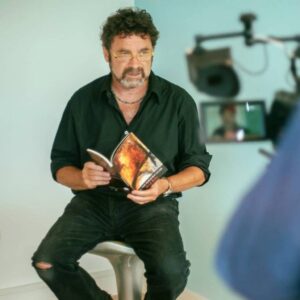
David Butler is a novelist, short story writer, playwright and poet. He is the author of City of Dis (New Island), All the Barbaric Glass (Doire Press), Liffey Sequence (Doire Press), and Fugitive (Arlen House). His new novel Jabberwock (under the name Dara Kavanagh) is out now, with Dedalus Books.







